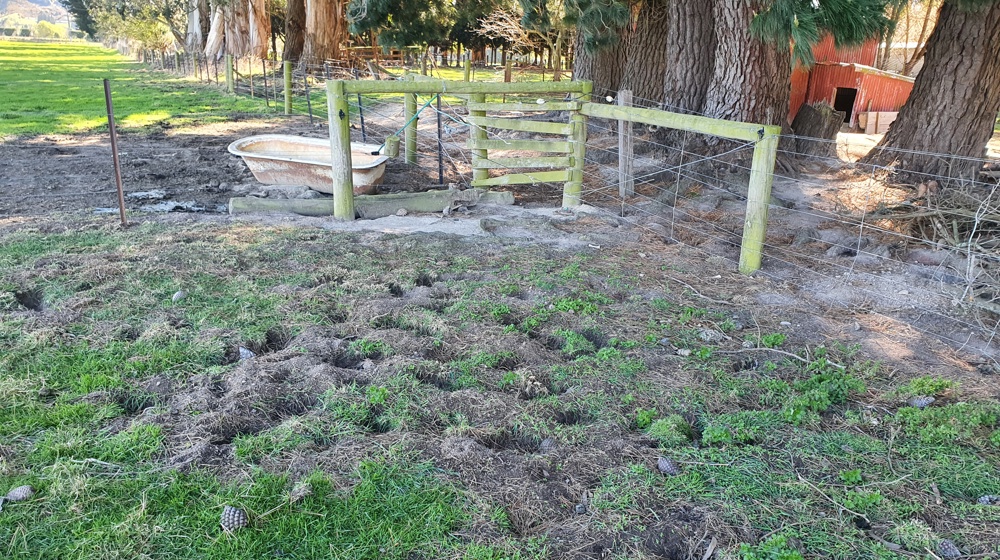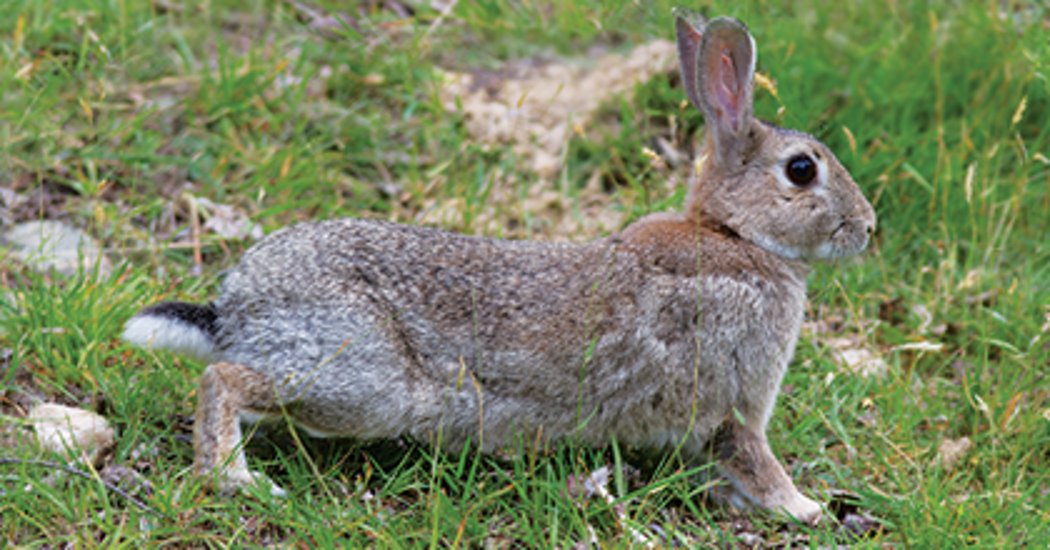
Rabbit
| Common name: | Rabbit |
|---|---|
| Scientific name: | Oryctolagus cuniculus |
| Management programme: | Sustained control |
Feral rabbits (Oryctolagus cuniculus) are small mammalian herbivores that inhabit grasslands at low altitudes across the Otago region. They were introduced to New Zealand in the early 1800s for meat and hunting, but in the absence of predators they have become a significant pest in Otago. Rabbits are a serious threat to our biodiversity, environment, and economy. They graze native seedlings and vegetation, compete with stock for pasture and crops, and cause soil erosion and degradation.
Rabbits reproduce rapidly. Females can be pregnant for 70% of the year and are capable of adjusting their litter size according to food supply, so rabbit populations are capable of rebounding quickly from natural disasters or control pressures. Rabbits as young as five months old can produce up to 50 offspring each year.
- Size: Adults can reach the size of a small cat, weighing up to 2kg.
- Appearance: Usually grey-brown in colour with a light underside. Some other colour variations occur in the wild (black, white, and orange).
- Signs: Any evidence of rabbits being present, such as burrows, scratchings, or scat (poo).
- Similar species: Hares can be easily distinguished from feral rabbits as hares are solitary, much larger in body size, with long, black-tipped ears, and large muscular hindquarters.
- Habitat: Includes grasslands at low altitude across the Otago region.
ORC does not do rabbit control on private land.
You are responsible for controlling the rabbits on your land. This means:
- All land occupiers must control feral rabbits levels on their land to level 3 or below on the Modified McLean Scale (3 MMS).
- There is also a good neighbour rule for rabbits. If you are controlling feral rabbit levels at, or below, 3 MMS within 500m of your property boundary, then your neighbours must do the same if they receive written direction from an Authorised Person. This is so your hard work doesn’t go to waste if a neighbouring property isn’t doing their part. Good neighbour rules bind all landowners including the Crown (e.g. Department of Conservation, Land Information New Zealand).
- You must not discharge a firearm within or across a property before or during a control operation using bait unless under the instruction or supervision of an Authorised Person. This will scare all the rabbits and render the operation mostly ineffective.
The Modified McLean Scale (MMS) is a scale used by councils to determine rabbit population levels through examining rabbit sign. It helps with regulation to make sure landowners are managing rabbit numbers to a level set in the Regional Pest Management Plan. Otago’s Regional Pest Management Plan has set the scale for Otago at a maximum of level 3.
As a rule of thumb, if you see groups of rabbit droppings less than 10 metres apart, there’s a problem and you need to take action.
|
Scale |
Rabbit infestation |
|
1 |
No sign found. No rabbits seen. |
|
2 |
Very infrequent sign present. Unlikely to see rabbits. |
|
3 |
Pellet heaps spaced 10m or more apart on average. Odd rabbits seen; sign and some pellet heaps showing up. |
|
4 |
Pellet heaps spaced between 5m and 10m apart on average. Pockets of rabbits; sign and fresh burrows very noticeable. |
|
5 |
Pellet heaps spaced 5m or less apart on average. Infestation spreading out from heavy pockets. |
|
6 |
Sign very frequent with pellet heaps often less than 5m apart over the whole area. Rabbits may be seen over the whole area. |
|
7 |
Sign very frequent with 2-3 pellet heaps often less than 5m apart over the whole area. Rabbits may be seen in large numbers over the whole area. |
|
8 |
Sign very frequent with 3 or more pellet heaps often less than 5m apart over the whole area. Rabbits likely to be seen in large numbers over the whole area. |
Table: Modified McLean Scale (Credit: National Pest Control Agencies).
Rabbit management needs to be coordinated and ongoing. Control options need to be tailored to the size, type, and location of a property. Depending on the severity of the rabbit problem on a property, you may need to engage a professional contractor. A good contractor will advise which type of control would be most effective on a property, when to carry out control, and discuss any other factors that may impact the result e.g. property rabbit netted fencing.
Ongoing monitoring will help you to assess the effectiveness of any control methods used and will also help to detect and address any future rise in rabbit numbers before they become a problem again.
Pindone carrot — best practice
Rabbit netted fencing
Pindone Pellets in Bait Stations
Rabbit Fumigation
We strongly recommend that you develop a long-term plan for managing rabbits on your property, to maintain rabbit numbers at low levels, rather than reacting only when numbers reach crisis levels.

Community rabbit management programmes
Community Rabbit Management Programmes

Rabbit management
Effective rabbit management in Otago requires coordination and continuity. Tailor control methods to your property's specifics, engaging professional contractors as needed. Develop a long-term plan to keep rabbit numbers low instead of reacting to crises. The Otago Regional Council emphasises a strategic approach to rabbit management, ensuring sustainable and effective control.
Authorised Person – under the Biosecurity Act 1993 an Authorised Person is authorised to administer and enforce the provisions of the Act, for example an ORC Biosecurity Officer.
Land occupier – an occupier includes a person who physically occupies the place, whether they own it or not. For example, if you are renting a house owned by someone else that does not live on that property, you are the occupier. You can see more about the responsibilities of occupiers (including owners) in section 3.3.1 of the Regional Pest Management Plan 2019-2029.
Neophobic – neophobia is the fear of anything new.
Sign – any evidence of rabbits being present, such as burrows, scratchings or scat.
www.orc.govt.nz/rabbits





























